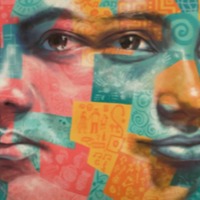
Robin Flemming
There are an estimated 403,000 people living in modern slavery in the United States (GSI 2018). Sex trafficking exists throughout the country. Traffickers use violence, threats, lies, debt bondage and other forms of coercion to compel adults and children to engage in commercial sex acts against their will. The situations that sex trafficking victims face vary, many victims become romantically involved with someone who then forces them into prostitution. Others are lured with false promises of a job, and some are forced to sell sex by members of their own families. Victims of sex trafficking include both foreign nationals and US citizens, with women making up the majority of those trafficked for the purposes of commercial sexual exploitation. In 2015, the most reported venues/industries for sex trafficking included commercial-front brothels, hotel/motel-based trafficking, online advertisements with unknown locations, residential brothels, and street-based sex trafficking. Robin Flemming was 20 years old when she met a man who seemed like everything she was looking for. He was loving, caring and promised her the world. It wasn’t until she moved to Texas to live with him that he began using her for profit. Flemming’s trafficker, whom she now refers to as “the monster,” brought her to a club one day and told her she was going to audition to be a dancer. During her first night of dancing, she earned $3,000. Throughout their marriage, they moved across the country and lived in more than six states. Flemming said her trafficker abused her verbally and mentally, raped her numerous times and occasionally kicked out of her home, leaving her with no place to go. After secretly stashing money at work, Flemming raised about $10,000, which she used to escape from her trafficker. She went to work one day and decided that she would not come back. It wasn't until two and a half years later that her trafficker finally started leaving her alone. Flemming was able to divorce her trafficker in 2007, a year after she saw him for the last time. She then had to work to get her life back to normal. Flemming stayed in exotic dancing for six more years. After counseling, continuous nightmares and a year of being sober, her life has returned to normal. She now lives in Columbia with her husband and daughter and runs a day-care. She is currently trying to repair her relationship with her other daughter, who also lives in Columbia and is married.
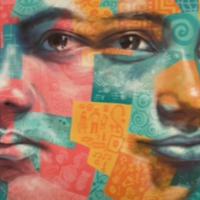
Afrah
There are an estimated 85,000 people living in modern slavery in Yemen (GSI 2018). Young girls are subjected to child forced marriage, with UNICEF estimating 32% of girls being married before the age of 18. There is currently no legal age of marriage in Yemen and poverty, the practice of dowry and strict social and religious customs are drivers of child marriage in the country. With the onset of conflict within the country, estimates suggest that child marriage is on the rise. Afrah was 16 years old when she was forced to leave school and get married.
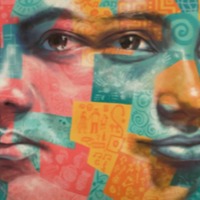
Shabnam
It is estimated that almost 8 million people are living in conditions of modern slavery in India (GSI 2018). Around 27% of girls are married before their 18th birthday. The skewed sex ratio in some regions of India has fuelled the trafficking and selling of women and young girls as brides within India. Women are reportedly sold off into marriage by their families, sometimes at a young age, and end up enduring severe abuse, rape and exploitation by their husbands. It is also reported that women and girls from impoverished backgrounds have been lured by promises of marriage by younger men from urban areas, then forced into sex work once married. Shabnam was forced to marry at the age of 13. She tells of how her husband attempted to poison her and poisoned her son. Shabnam finally asked for a divorce and with the help of the Centre for Social Research is now free.
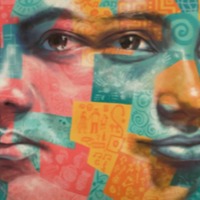
Jamie
There are an estimated 134,000 people living in modern slavery in Rwanda (GSI 2018). The country is a source for men, women and children subjected to forced labour and sex trafficking. Young girls working as domestics often have their employment terminated after becoming pregnant and subsequently become exploited in to prostitution. Moreover, Rwandan men, women and children are often trafficked to other destinations around the world including East Africa, the Middle East and China for forced labour and forced marriage. Refugees fleeing conflict and political violence in neighbouring countries remain highly vulnerable to trafficking in Rwanda. Jamie was subjected to sexual exploitation as a child after a breakdown in her parent’s marriage led to her being kept by an older man for two weeks. After being raped repeatedly by two men, she was locked in a house which caught fire. Jamie woke up in hospital disorientated and terrified.
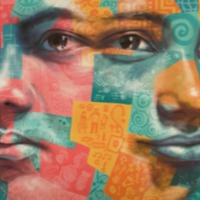
Kundamanchi Ramulamma
It is estimated that almost 8 million people are living in conditions of modern slavery in India (GSI 2018). The skewed sex ratio in some regions of India has fuelled the trafficking and selling of women and young girls as brides within India. Women are reportedly sold off into marriage by their families, sometimes at a young age, and end up enduring severe abuse, rape and exploitation by their husbands. It is also reported that women and girls from impoverished backgrounds have been lured by promises of marriage by younger men from urban areas, then forced into sex work once married. Kundamanchi Ramulamma was 15 years old when she was married to a person from her caste. After the marriage, Kundamanchi Ramulamma was sexually abused by her father-in-law. He father went to the panchayat who eventually agreed to a divorce, however, a few month later, Kundamanchi Ramulamma was forced to marry again.

Esther
There are an estimated 403,000 people living in conditions of modern slavery in the United States (GSI 2018). Among this number, are children subjected to forced marriage. A study published on child marriage in 2011 determined that the prevalence of child marriage among women in the US was 8.9 percent, meaning that over 9.4 million US women were married at age 16 or younger. Forced marriage and child marriage are understudies problems within the United States and more research is needed to determine what drives its occurrence. Esther was 17 years old when she was forced to marry a boy against her will. She was subjected to emotional, physical and sexual abuse daily by her husband. After 9 years, Esther was finally able divorce her abusive husband, however was coerced into having her divorce arbitrated by a religious court that deemed she must raise her children in the same insular religion in which she was raised and married. Unchained provided Esther with an attorney who was able to win Esther full custody of her children and the rise to raise them as she chooses.
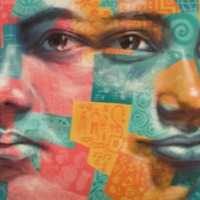
Anessa
There are an estimated 592,000 people living in modern slavery in Bangladesh (GSI 2018). Men, women and children are subjected to forced labour and sex trafficking. Bangladesh is host to more than 1 million undocumented Rohingya, including hundreds of thousands who fled Burma in previous decades. The Rohingya community’s stateless status and inability to work legally increases their vulnerability to human trafficking. Rohingya women and girls are reportedly recruited from refugee camps for domestic work and are instead subjected to sex trafficking. Within the country, Bangladeshi children and adults are subjected to sex trafficking, domestic servitude, and forced and bonded labor, in which traffickers exploit an initial debt assumed by a worker as part of the employment terms. Anessa was 13 years old when she married her 50 year old employer Samad. Once married, Samad told Anessa that she would go work abroad. A job was found for Samad in Kuwait, where upon arrival, she was told she would engage in sex work. Samad sent what money she received back to her husband, however upon returning to Bangladesh found out that her husband had divorced her.